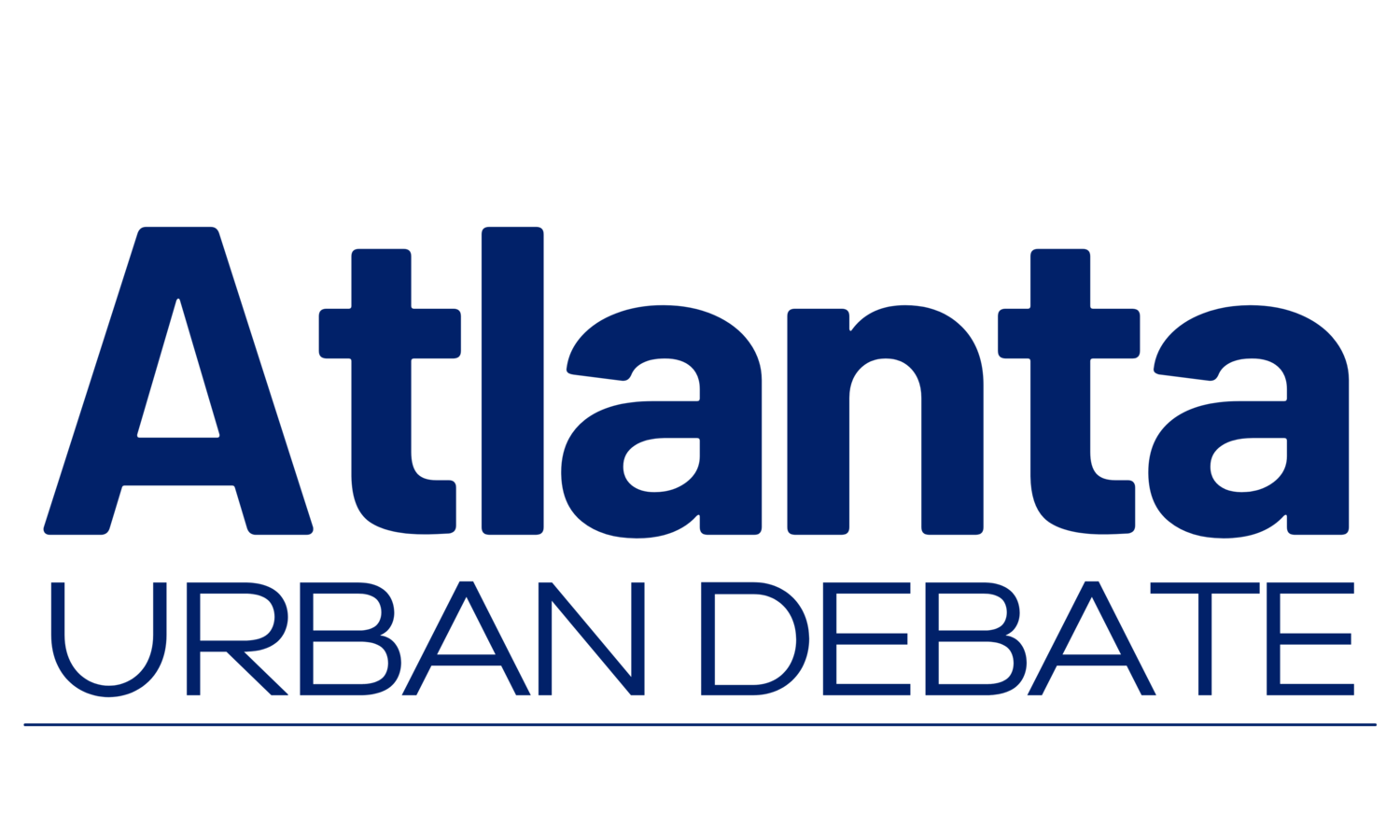The Atlanta Urban Debate League is committed to providing excellent debate education programs, services, and opportunities to diverse students, educators, and members of the community!
High School Open Curriculum Guide
Speech Checklist
So now you’ve learned your new skills and how to use them in a debate round, but let’s make sure that we’re on the same page. Here is a brief checklist for what you must do in each speech that you give in Open.
The 1AC and 1NC
Remember, your constructive speeches “construct” the basic arguments that the rest of the debate round will be about. In these speeches, your job is to:
Read all the 1AC and 1NC evidence you want to use.
If you’re affirmative, that’s your SHIP (solvency, harms/advantage(s), inherency, and plan).
If you’re negative, that’s a combination of disadvantage(s) (uniqueness, link, impact), counterplans, and kritiks, as well as some answers to the affirmative case.
Answer cross-examination questions about your speech after you’ve given it.
The 2AC, 2NC, and 1NR
These speeches draw on what’s been said in the first two speeches to begin drawing comparisons. If you’re giving one of these speeches, your job is to:
Read an overview for the argument you’re going for. These may very in form depending on whether you’re extending a disadvantage, counterplan, or Kritik, and there are overview worksheets in your tournament workbook that you use to help make this easier.
Then, extend your evidence and compare it to what your opponents read about your arguments. You should explain to the judge why they should prefer your cards to your opponents’ cards.
Then, answer your opponent’s arguments. You can use DR. MO for some of their arguments, and there are pages in the evidence packet for you to use in response to other arguments.
[2AC and 2NC only]: Answer cross-examination questions about your speech after you’ve given it.
Take note – since the 2NC and 1NR are back-to-back speeches, they essentially combine to create a single six-minute speech. You and your partner should split up arguments that you want to cover to maximize your time, and you shouldn’t just repeat each other’s points. This is called splitting the block.
The 1AR, 2NR, and 2AR
These are the hardest speeches in the debate round, but they’re also the shortest! In these speeches, your job is to:
Pick your most convincing conditional world. You may have read some combination of the kritik, the counterplan, and some disadvantages. Follow the rule of one and choose one option of those for your final speech – a disadvantage and case defense, a counterplan and its net benefit, or the kritik.
Explain to the judge why they should vote for your team. Focus on your most convincing argument. Maybe you should win because your impact outweighs on magnitude, or maybe you should because your counterplan solves the case while avoiding the net benefit – it’s up to you, but you must convince them why that means they should vote for you.
Extend the impact comparison (MR. T) that you started doing in your overviews to prove why your side should win the round. Remember to be comparative and explain why your impact matters more than your opponents’ impact, not just about why your impact is a big deal.
Extend the evidence comparison (ABCD) that you started doing in your constructive speeches to prove why your side’s evidence is better than your opponents’. Even if you have a good MR .T, you’ll need the evidence to back it up for judges to vote for you!
